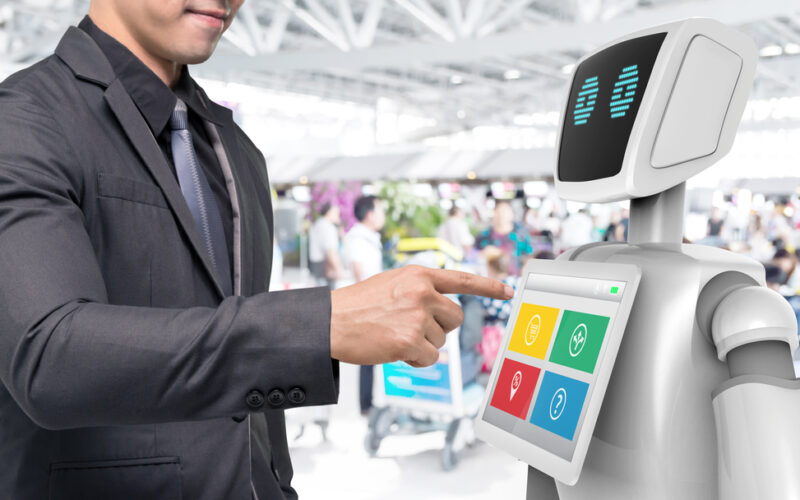Modern airports are in a state of huge transformation, while the evolution of the user experience is advancing at an unprecedented rate. Recent technological advances being made at airports have already revolutionized how consumers of air travel access and interface with the end product – their flight.
Yet, with innovation teams at companies all over the world continuing to seek out new ways to refine the passenger experience further, there is no sign that this exponential rise in airport technological innovations is likely to falter any time soon.
From the increasing use of digital automation to smooth the throughflow of passengers as they pass through the terminal, or even airport authorities improving the passenger experience by using Artificial Intelligence, there is barely a single area of the airport environment being left untouched by the advancements being made. Even the battle towards achieving net zero targets has become a focus for airport innovators.
In this two-part article, AeroTime investigates the leading trends in airport technological innovations and discusses how much further these trends are likely to develop in the future. It will present examples of where such innovations are already being adopted and evaluate how keeping abreast of technology can prove to be a win-win for airport operators and passengers alike.
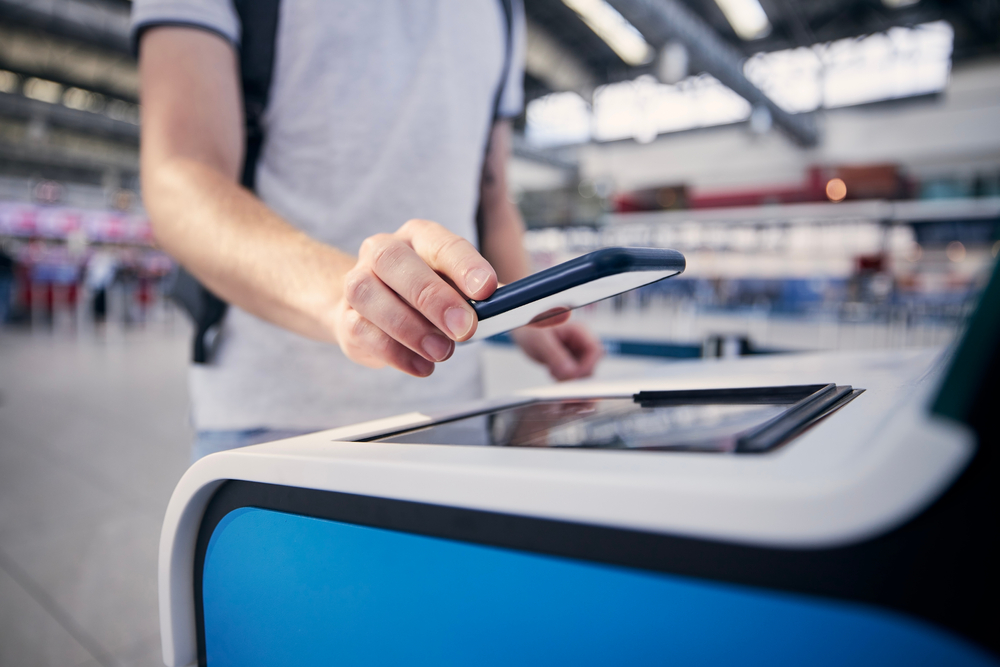
The evolving passenger experience
Thankfully, the days of hour-long queues at check-in using carbon copy paper tickets are a thing of the past. Indeed, even with paper boarding cards fast disappearing from the hands of air travelers in favor of the device-based equivalent, even the way passengers interface with airport infrastructure is continuing to evolve.
To continue to meet the changing expectations of air passengers while maintaining a competitive advantage over rivals, the modern-day airport has to embrace cutting-edge technology to enhance the entire travel experience. Advancements in facial recognition, biometric scanning, and AI-driven security checks will soon become commonplace within the airport setting, making the journey from check-in to boarding gate smoother and reducing passenger queuing time by an estimated 30-40%.
Reducing queue times at baggage drop-off and security checkpoints can also open up terminal space (freeing up approximately 15%-20% of an airport terminal’s real estate) for other potentially revenue-earning opportunities.
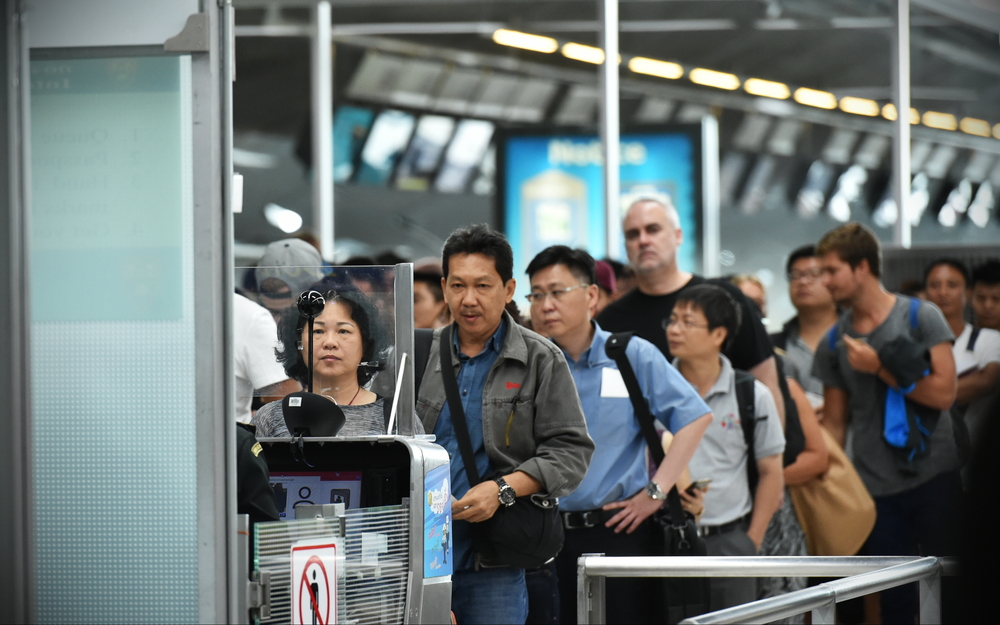
This greater efficiency of passenger throughflow means that both airport operators and passengers can benefit. Travelers generally enjoy less time queuing and more time exploring the airport’s shops, food, and beverage outlets, and increasingly so, entertainment options, including cinemas, immersive experiences, and other leisure-based attractions.
Passengers with more time on their hands beyond security opens up additional potential revenue streams for airport operators – an opportunity that airport operators are well aware of and remain keen to exploit.
One thing is for sure, the airport terminals of tomorrow will be a far cry from those in operation today, offering a smoother experience through the use of technological innovation to benefit passengers and ultimately the operators that run them.
The adoption of Artificial Intelligence
With the use of Artificial Intelligence (AI) applications rolling out at an increasing rate, air travel will be one area where AI is likely to be used extensively going forward. With AI tools such as ChatGPT (developed by Open AI) becoming increasingly accessible, airports are exploring innovative ways in which AI can smooth the passenger experience and improve wider terminal operations functions.
Advances in AI (and machine learning) are expected to disrupt traditional airport operating models and transform the customer experience while also enhancing efficiency. Yet while AI and other technologies can be used to automate predictable processes, human-based resources will still be required to manage and humanize certain functions.
“With the arrival of Generative AI in 2023, the technology has surged to the top of airport and airline agendas, with 97% of airlines planning a program to develop the technology,” stated a report published by the Société Internationale de Télécommunications Aéronautiques (SITA) in 2023.
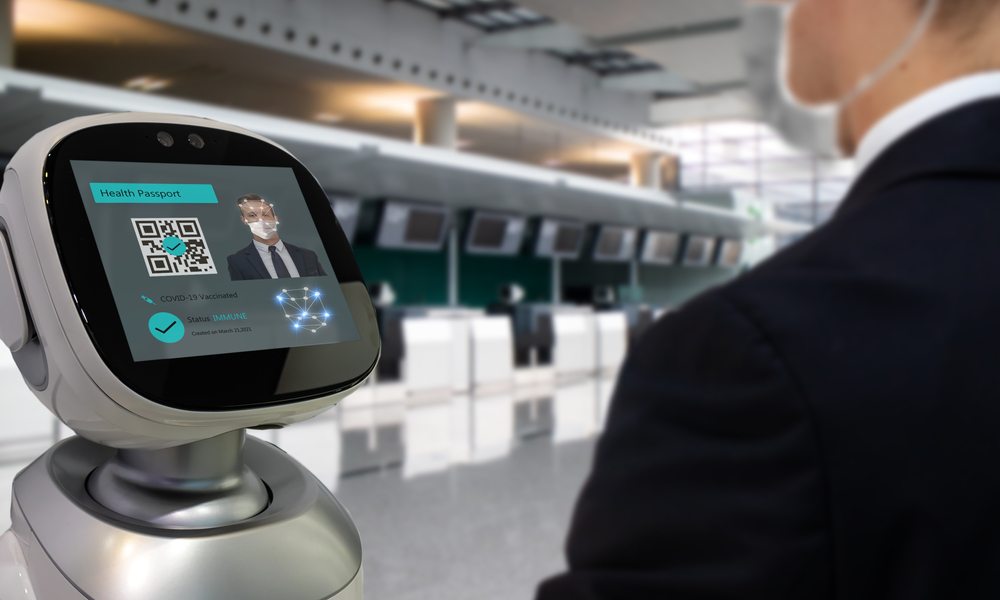
In the rapidly evolving world of air travel, artificial intelligence is being applied to provide innovation throughout the entire experience. The majority of the seamless operations already in operation at airports (including security screening to baggage handling) are already powered by technologies that include AI.
As AI technologies such as facial recognition, predictive analytics, personalized digital assistants, and real-time navigation and weather applications are further brought into the entire travel experience, airports are widely expected to transform into fully accessible and immersive hubs for travel, retail, and entertainment.
Among leading examples of the adoption of AI within the airport setting, Shanghai Hongqiao International Airport (SHA) is enhancing its passenger experience and operational efficiency with AI and ML-powered solutions. In Tokyo, Narita International Airport (NRT) is proactively incorporating robotics and AI to promote business efficiency and enhanced productivity. It is also moving forward with the use of AI to improve customer satisfaction by using and analyzing AI trained on real customer feedback.
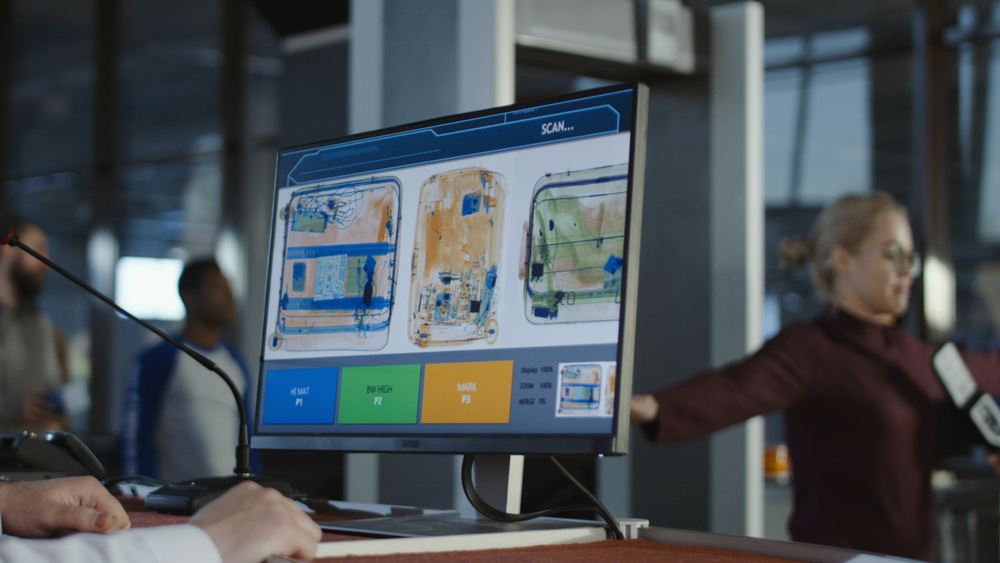
Elsewhere, Amsterdam-Schiphol Airport (AMS) and technology company Pangiam are commencing trials of AI technology to enhance the inspection of carry-on bags.
The adoption of AI will provide the opportunity for airports to re-think the way their terminals operate and to entirely redesign the layout of airports, as innovations are introduced that reduce, if not eradicate the need for stopping points along the passenger’s airport journey. According to SITA, 86% of airlines are collaborating with innovation partners to make advancements in AI, machine learning, and computer vision.
“39% of these have already been implemented, while another 47% confirmed plans by the end of 2026. Looking at airports, 16% of airports already use AI and ML for improved decision-making, with another 51% confirming plans to implement such solutions by the end of 2026,” said SITA in its 2023 report, ‘IT Insights’.
“AI enables us to do things today that we couldn’t do even five years ago,” says Evolv Technology CEO Michael Ellenbogen. “It enables us to train the computer in ways that we couldn’t before. You throw a lot of data at it and you use that data to train a model to recognize objects or signals of interest.”
Biometrics and digital ID services
Progressively, more travelers are embracing digitization, with 45% of air travel passengers saying they are ready to drop paper passports for digital identities.
Biometric technology has been around since 1969 when the US Federal Bureau of Investigation (FBI) pushed for the use of automated fingerprint identification. The first fingerprint scanners were introduced in 1975, and in the 1990s and 2000s, biometric security authentication was commonplace in both companies and institutions. In 2001, United States (US) legislation mandated the use of biometrics at airports for entry and exit following the 9/11 attacks.
Since then, the use of biometrics, particularly hand and fingerprint scanning, has been widely used in airports worldwide. The pandemic accelerated the development of non-contact biometric authentication to facilitate a more hygienic and seamless experience for passengers. Nowadays, the use of biometric authentication has become a regular fixture at many airports, with more adopting the hardware required to offer the facility at an increasing rate.
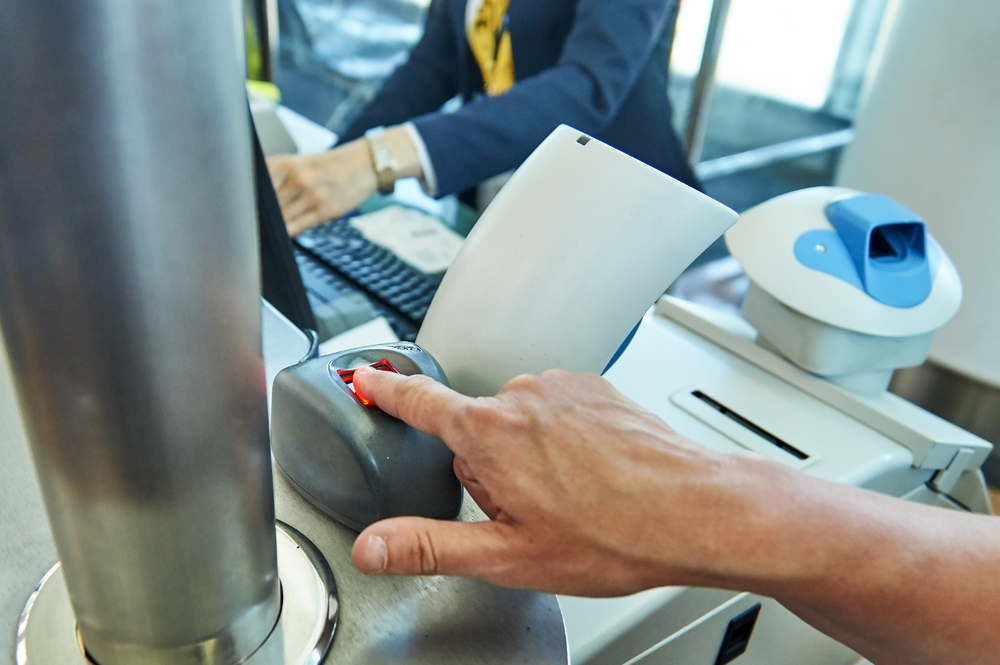
Biometrics are already available in some airports and are expected to replace paper passports, boarding passes, and other travel documents in the near future.
“Confidence in biometric identification is on the rise,” states IATA’s 2023 Global Passenger Survey document. “In the last 12 months, 46% of passengers used biometrics at the airport, up from 34% in 2022. Furthermore, 75% of passengers prefer using biometric data over traditional passports and boarding passes.”
Implementation of biometric and digital identity technology continues at pace globally. ANA Aeroportos de Portugal and Vision-Box recently partnered to launch the ‘Biometric Experience by VINCI Airports’ at Lisbon Airport (LIS), with plans to expand the project to four additional Portuguese airports. In Germany, Fraport has enabled all airlines operating at Frankfurt Airport (FRA) to jointly use face biometrics as identification from check-in to boarding, becoming the first airport in Europe to offer biometric touchpoints to all airline passengers.
The US TSA, in collaboration with the State of Arizona and Apple, has deployed digital technology for identity verification at Phoenix Sky Harbor International Airport’s (PHX) security checkpoints. Arizona-resident travelers can use the system to verify their identity using their state-issued mobile driver’s license or mobile identification card issued in Apple Wallet on iPhone or Apple Watch.
Also in the US, Delta Air Lines has expanded its Digital ID program to Los Angeles International Airport (LAX), New York-LaGuardia Airport (LGA), and New York-JFK International Airport (JFK) for a touchless airport experience for its passengers.

In South Africa, Airports Company South Africa deployed IDEMIA’s Passenger Flow Facilitation solution in nine South African airports for an end-to-end solution, while at Honolulu’s Daniel K Inouye International Airport (HNL), the airport operator has adopted SITA’s biometric-enabled SITA Smart Path to support US Customs and Border Protection in fulfilling biometric passenger screening on exit from the US.
At Dubai International Airport (DXB), the airport authority has implemented smart gates and biometric facial recognition to speed passengers through check-in, boarding, and immigration by linking people’s retina scans to their passports. The system also enables them to screen carry-on baggage without having travelers remove devices. These technologies require increased cyber security, but nearly two-thirds of passengers are willing to share biometrics for an easier travel experience.
Also in Dubai, Emirates’ biometric pathway launched in 2020 uses biometric technology to allow passengers to check in for their flight, complete immigration formalities, enter the airline lounge, and board flights, simply by strolling through the airport. Biometric data can be collected without the need for passengers to even stop on their journey through the airport terminal.
Biometrics and digital identity will undoubtedly remain a key area to watch through the remainder of 2024 and beyond.
Passenger security
In the future, further digitalization and automation of airport processes will be key to increasing efficiency and flexibility as the sector looks to improve the overall passenger experience in airport terminals. Companies in the technology sector are seeking new ways in which they can support the global airport industry through everything an airport does to move towards offering passengers an end-to-end optimized journey.
In March 2024, the US Transportation Security Administration (TSA) unveiled a new self-service screening system at Harry Reid International Airport (LAS) in the US. The prototype system was revealed to US media on March 6, 2024, with the first live passengers using the self-service screening service from mid-March 2024. The hope is that the self-service technology will allow airports to process thousands of passengers more efficiently each day.
Instead of passengers interacting with TSA staff as they pass through hand luggage screening and body scanners, interactive video monitors will be in place to offer guidance. The video monitors will provide step-by-step instructions for passengers to complete screening at their own pace and once all checks are complete automated exit doors will open to let travelers through.
If any issues arise during the self-scanning process, then passengers will receive on-person alarm information enabling them to resolve the situation themselves rather than being patted down or going through a secondary screening procedure.
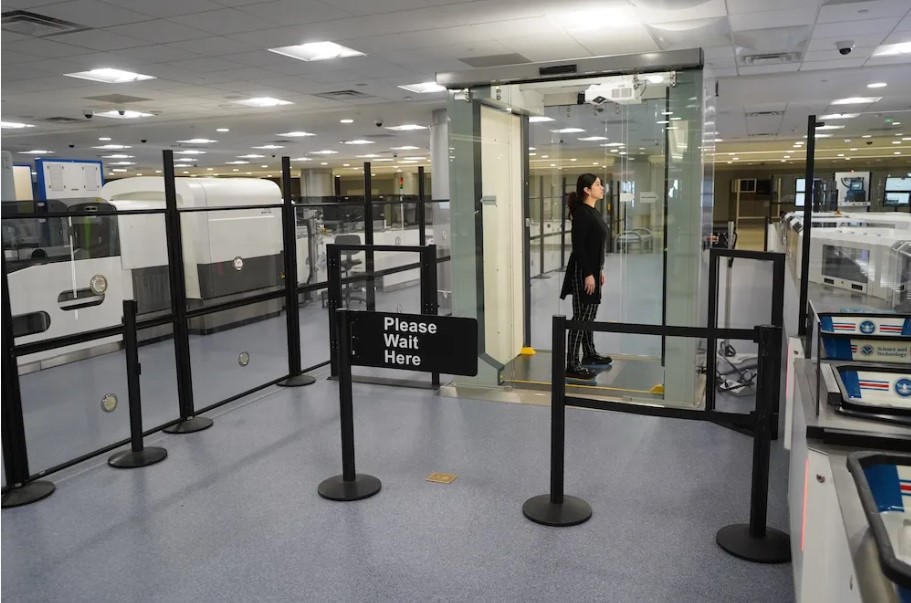
“We are constantly looking at innovative ways to enhance the passenger experience, while also improving security,” TSA Administrator David Pekoske said. “This self-service prototype allows our trusted travelers to complete the screening process at their own pace. Testing at the Innovation Checkpoint in Las Vegas allows us to collect valuable user data and insights and explore opportunities to apply parts of the prototype to other airport security checkpoints.”
While this technology remains in development, it is one that many passengers will no doubt welcome when it is rolled out at other airports.
While many passengers still dread the airport security ‘pat-down’, vast improvements in scanning technology have meant that such experiences could be a thing of the past. The installation of Computed Tomography (CT) X-ray scanners not only enables enhanced “hands-free” screening to be undertaken by security staff but should also allow passengers to leave liquids and electronics in hand baggage where existing rules currently prevent them from doing so.
In the United Kingdom, airports were supposed to have had such equipment fully installed and working by the end of 2022. However, a shortage of scanners as well as the lack of trained staff to use them means this deadline has been pushed back for full compliance to June 2024.
One such airport that already has the technology in place is Birmingham Airport (BHX) in the UK Midlands. The airport’s new security checkpoints feature Smiths Detection’s HI-SCAN 6040 CTiX, a CT X-ray scanner that produces high-resolution volumetric 3D images for quicker and deeper baggage assessment and low false-alarm rates.
“Once built and operational, our new pre-flight screening area will further enhance our already high standards of security as well as improve the efficiency of our operation,” said Stephen Barker, Development & Construction Director, Birmingham Airport.
“This improved efficiency will enable us to process customers quickly, especially at peak travel times. Customers will no longer be required to remove liquids and laptops from hand luggage. We have selected Smiths Detection because of their proven track record in developing leading technology that improves safety and efficiency, and their commitment to work with us and continue the journey of improvement for many years to come,” he added.
Other innovative security solutions to be introduced at Birmingham Airport include the iLane, an automatic tray return system, and additional X-ray systems which will also be deployed at staff and visitor checkpoints.
As any air passenger will testify, the security inspection point is probably the most dreaded airport process that one has to endure on a journey through any airport terminal.
However, with technologies such as those detailed above being rolled out, the hope is that a fully automated security system that requires no queuing, no removal of shoes or items from hand baggage, and no longer having to endure a stranger rubbing you down is nearer than one might imagine.
While the prospect of such a system is likely to become a reality soon, airports will be closely looking for any advancements in this area, as the removal of the security bottleneck at airports is an opportunity to improve the passenger experience elsewhere within their terminals.
Coming up in Part Two
In the next part of this article, AeroTime will take a closer look at other areas of airport operations benefitting from technology innovations that will shape the passenger experience of tomorrow.
These include the use of robotics and automation, the use of the Metaverse and immersive passenger experiences, and possibly the one area that affects us all whether we use air travel or not – sustainability.
What are your views on the areas of innovation covered in this article? Have you any experience of any of the technologies discussed? Share your thoughts in the comments below.

